Hydrochloric Acid Pretreatment of Different Types of Rice Husk Ash Influence on the Properties of Cement Paste
Abstract
1. Introduction
2. Materials and Methods
2.1. Cement
2.2. Rice Husk Ash
2.3. Cement Mixture Proportions
2.4. Testing Methods
2.4.1. Compressive Strength Test
2.4.2. Flexural Strength Test
2.4.3. Water Absorption Test
2.4.4. SEM Analysis of RHA Cement
2.4.5. XRD Analysis of RHA
3. Results and Discussion
3.1. Compressive Strength
3.2. Flexural Strength
3.3. Coefficient of Water Absorption
3.4. Microstructure of Paste Phase Containing RHA
4. Conclusions
Author Contributions
Funding
Conflicts of Interest
References
- China National Grain and Oils Information Center. Available online: http://www.grainoil.com.cn/ (accessed on 13 November 2019).
- Wang, X.L.; Hoekman, S.K.; Han, Y.; Chow, J.C.; Watson, J.G.; Wu, X.; Wu, Y.; Schuetzle, D.; Schuetzle, R. Potential emission reductions by converting agricultural residue biomass to synthetic fuels for vehicles and domestic cooking in China. Particuology 2019. [Google Scholar] [CrossRef]
- Prasara-A, J.; Gheewala, S.H. Sustainable utilization of rice husk ash from power plants: A review. J. Clean. Prod. 2017, 167, 1020–1028. [Google Scholar] [CrossRef]
- Hossein, M.; Babak, A.; Mu’azu, M.A. Applications of rice husk ash as green and sustainable biomass. J. Clean. Prod. 2019, 237, 117851. [Google Scholar] [CrossRef]
- Karim, M.; Hossain, M.; Khan, M.N.N.; Zain, M.F.M.; Jamil, M.; Lai, F.C. On the Utilization of Pozzolanic Wastes as an Alternative Resource of Cement. Materials 2014, 7, 7809–7827. [Google Scholar] [CrossRef] [PubMed]
- Xu, W.T.; Lo, T.Y.; Memon, S.A. Microstructure and reactivity of rich husk ash. Constr. Build. Mater. 2012, 29, 541–547. [Google Scholar] [CrossRef]
- Yao, X.W.; Xu, K.L.; Liang, Y. Comparing the thermo-physical properties of rice husk and rice straw as feedstock for thermochemical conversion and characterization of their waste ashes from combustion. BioResources 2016, 11, 10549–10564. [Google Scholar] [CrossRef]
- Tulashi, S.K.; Kotoka, F.; Mensah, D.K.; Kwablah, A.K. Investigation of the compressive strength of pit sand, and sea sand paste prisms produced with rice husk ash as additive. Constr. Build. Mater. 2017, 151, 383–387. [Google Scholar] [CrossRef]
- Vigneshwarin, M.; Arunachalam, K.; Angayarkanni, A. Replacement of silica fume with thermally treated rice husk ash in reactive powder concrete. J. Clean. Prod. 2018, 188, 264–277. [Google Scholar] [CrossRef]
- Yin, C.G.; Lasse, A.R.; Søren, K.K. Grate-firing of biomass for heat and power production. Prog. Energy Combust. Sci. 2008, 34, 725–754. [Google Scholar] [CrossRef]
- Qin, Z.; Zhuang, Q.L.; Cai, X.M.; He, Y.; Huang, Y.; Jiang, D.; Lin, E.; Liu, Y.; Tang, Y.; Wang, M.Q. Biomass and biofuels in China: Toward bioenergy resource potentials and their impacts on the environment. Renew. Sustain. Energy Rev. 2018, 82, 2387–2400. [Google Scholar] [CrossRef]
- Bui, D.D.; Hu, J.; Stroeven, P. Particle size effect on the strength of rice husk ash blended gap-graded Portland cement concrete. Cem. Concr. Compos. 2005, 27, 357–366. [Google Scholar] [CrossRef]
- Chopra, D.; Siddique, R. Strength, permeability and microstructure of self-compacting concrete containing rice husk ash. Biosyst. Eng. 2015, 130, 72–80. [Google Scholar] [CrossRef]
- Alex, J.; Dhanalakshmi, J.; Ambedkar, B. Experimental investigation on rice husk ash as cement replacement on concrete production. Constr. Build. Mater. 2016, 127, 353–362. [Google Scholar] [CrossRef]
- Saraswathy, V.; Song, H.W. Corrosion performance of rice husk ash blended concrete. Constr. Build. Mater. 2007, 21, 1779–1784. [Google Scholar] [CrossRef]
- Kang, S.H.; Hong, S.G.; Moon, J. The use of rice husk ash as reactive filler in ultra-high performance concrete. Cem. Concr. Res. 2019, 115, 389–400. [Google Scholar] [CrossRef]
- Praveenkumar, T.R.; Vijayalakshmi, M.M.; Meddah, M.S. Strengths and durability performances of blended cement concrete with TiO2 nanoparticles and rice husk ash. Constr. Build. Mater. 2019, 217, 343–351. [Google Scholar] [CrossRef]
- Li, H.T.; Xu, B.X.; Xu, Y.N. Effect of calcination method on morphological characteristics and composition of rice husk ash. Trans. Chin. Soc. Agric. Mach. 2013. [Google Scholar] [CrossRef]
- Padhi, R.S.; Patra, R.K.; Mukharjee, B.B.; Dey, T. Influence of incorporation of rice husk ash and coarse recycled concrete aggregates on properties of concrete. Constr. Build. Mater. 2018, 173, 289–297. [Google Scholar] [CrossRef]
- Werther, J.; Saenger, M.; Hartge, E.U.; Ogada, T.; Siagi, Z. Combustion of agricultural residues. Prog. Energy Combust. Sci. 2000, 26, 1–27. [Google Scholar] [CrossRef]
- Franco, Z.; Mauricio, L. A methodology for assessing the chemical and physical potential of industrially sourced rice husk ash on strength development and early-age hydration of cement paste. Constr. Build. Mater. 2017, 149, 869–881. [Google Scholar] [CrossRef]
- Nihat, K.M.; Mansur, T.; Ahmet, B. Properties of concrete with pumice powder and fly ash as cement replacement materials. Constr. Build. Mater. 2015, 85, 1–8. [Google Scholar] [CrossRef]
- Shehab, H.K.; Eisa, H.A.; Wahba, A.M. Mechanical properties of fly ash based geopolymer concrete with full and partial cement replacement. Constr. Build. Mater. 2016, 126, 560–565. [Google Scholar] [CrossRef]
- Jagadeesh, B.; Tirukovela, S.K. Effect of waste ceramic tiles as a partial replacement of aggregates in concrete. Mater. Today Proc. 2019, 19, 875–877. [Google Scholar]
- Chandrasekhar, S.; Pramada, P.N.; Praveen, L. Effect of organic acid treatment on the properties of rice husk silica. J. Mater. Sci. 2005, 40, 6535–6544. [Google Scholar] [CrossRef]
- Gholizadeh, V.A.; Khaloo, A.R.; Rajabipou, F. The effects of a hydrochloric acid pre-treatment on the physicochemical properties and pozzolanic performance of rice husk ash. Cem. Concr. Compos. 2013, 39, 131–140. [Google Scholar] [CrossRef]
- Xu, W.T.; Wei, J.X.; Chen, J.J. Comparative Study of Water-Leaching and Acid-Leaching Pretreatment on the Thermal Stability and Reactivity of Biomass Silica for Viability as a Pozzolanic Additive in Cement. Materials 2018, 11, 1697. [Google Scholar] [CrossRef]
- Khan, W.; Shehzada, K.; Bibi, T. Performance evaluation of Khyber Pakhtunkhwa Rice Husk Ash (RHA) inimproving mechanical behavior of cement. Constr. Build. Mater. 2018, 176, 89–102. [Google Scholar] [CrossRef]
- GB 175-2007, Common Portland Cement; Standardization Administration of China: Beijing, China, 2007.
- Feng, Q.G.; Yamamichi, H.; Shoya, M. Study on the pozzolanic properties of rice husk ash by hydrochloric acid pretreatment. Cem. Concr. Res. 2004, 34, 521–526. [Google Scholar] [CrossRef]
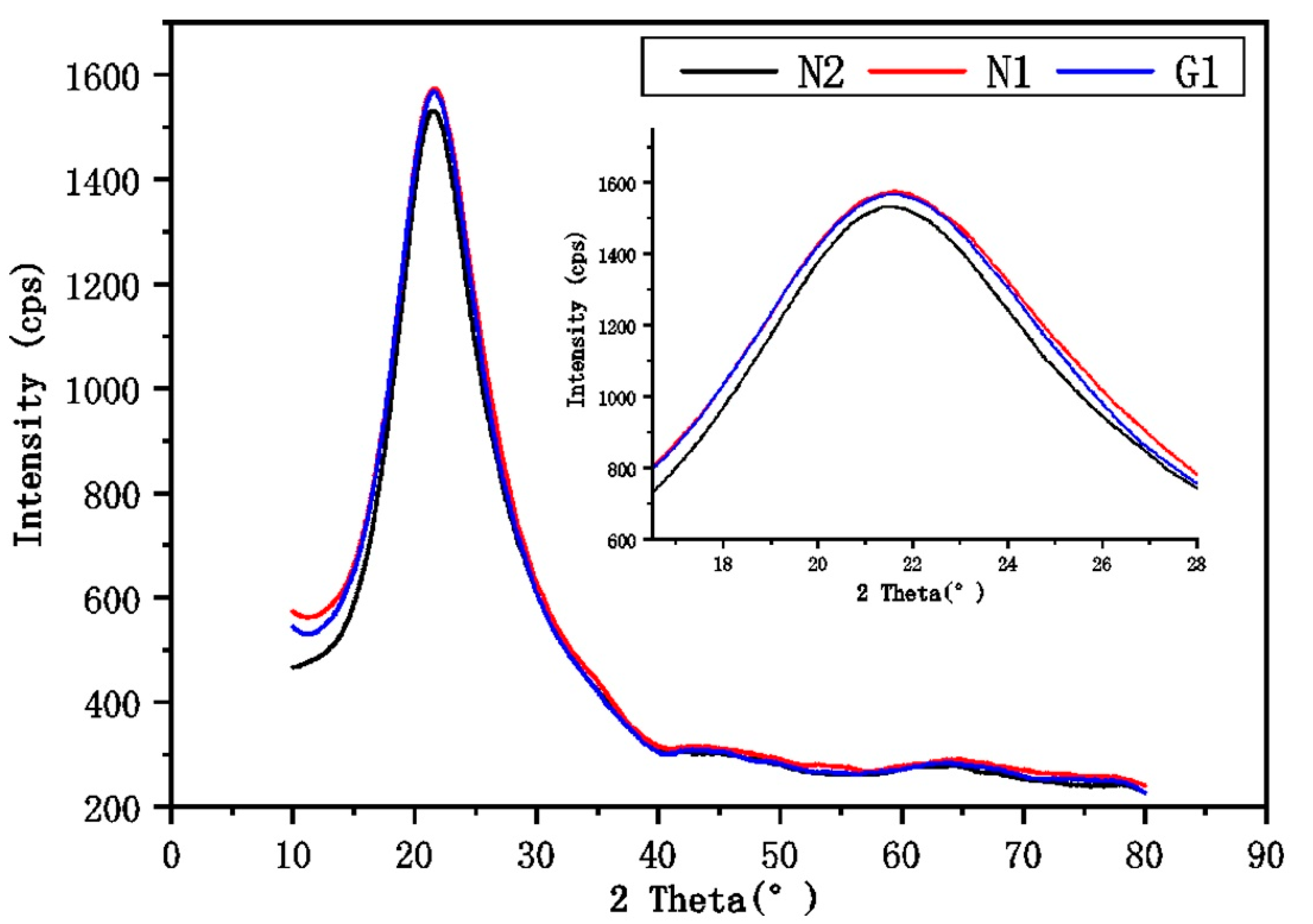
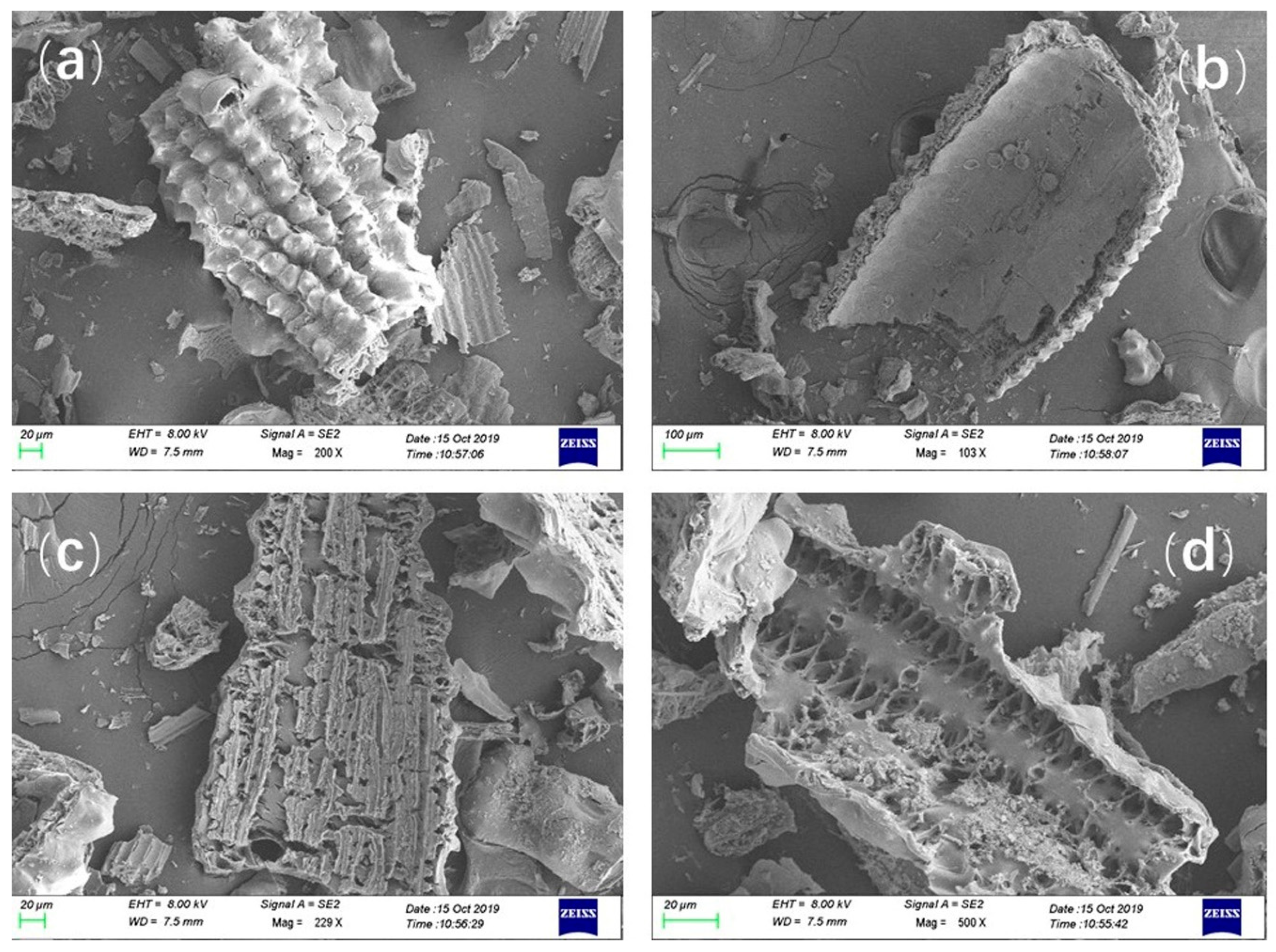
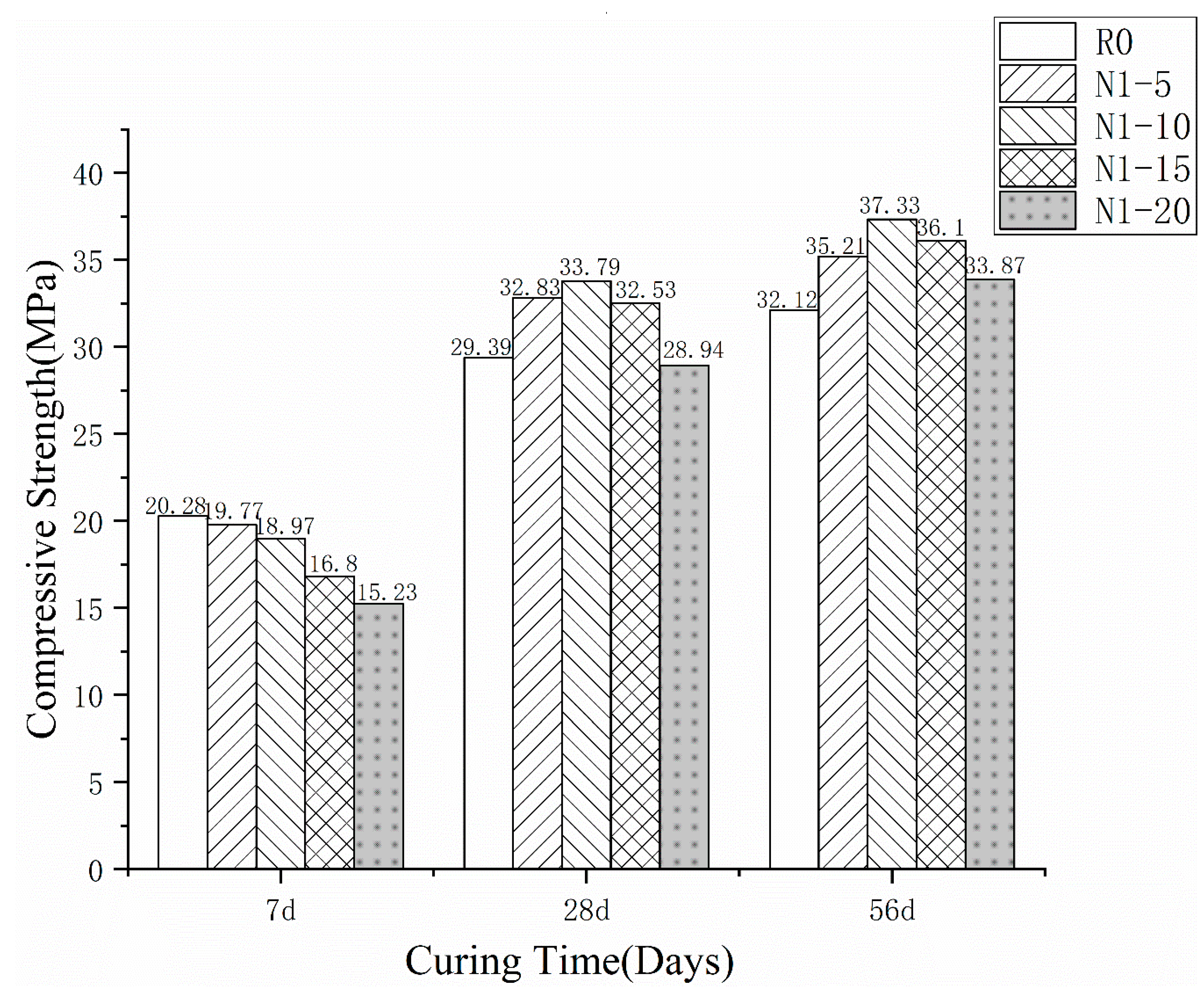
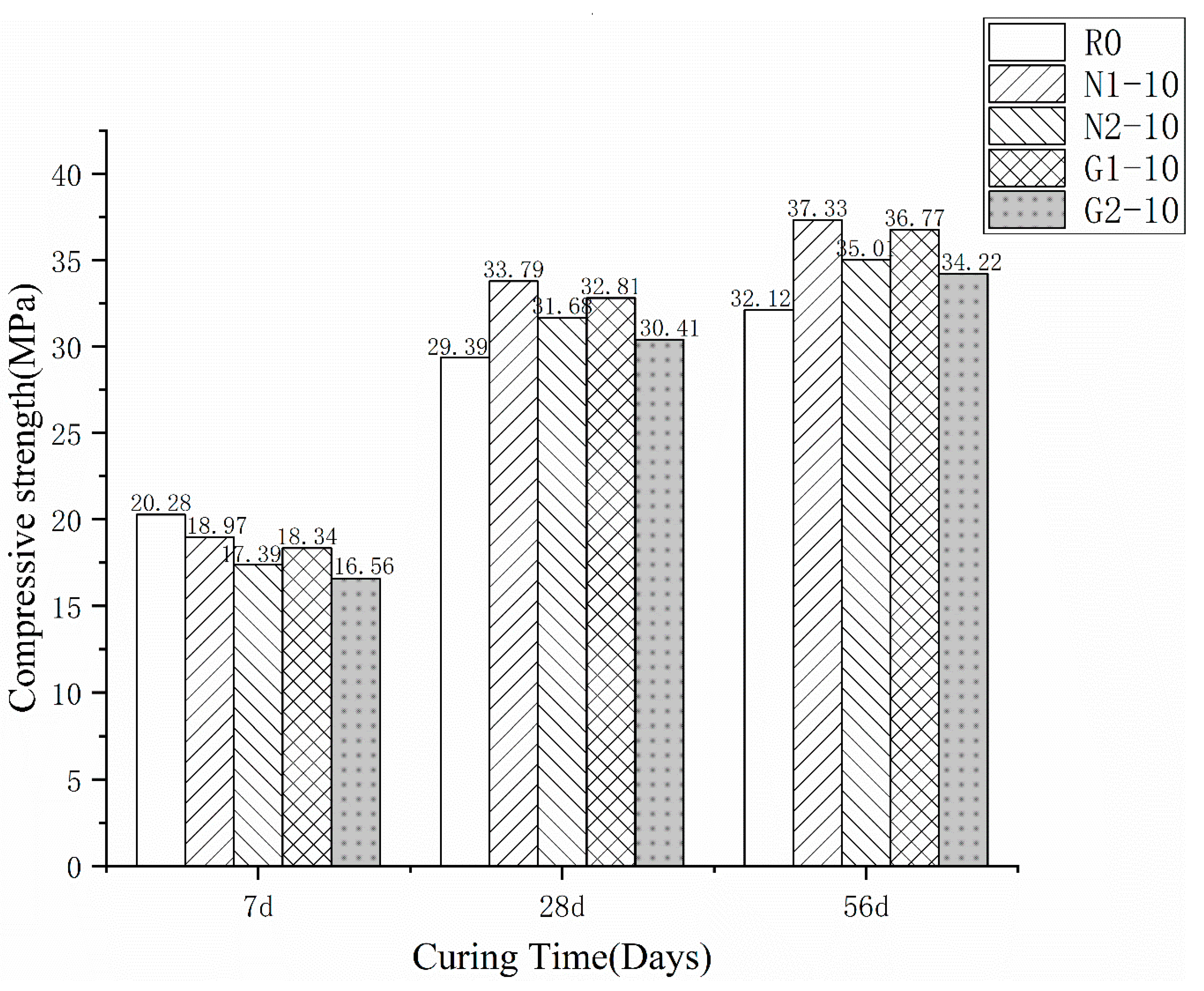

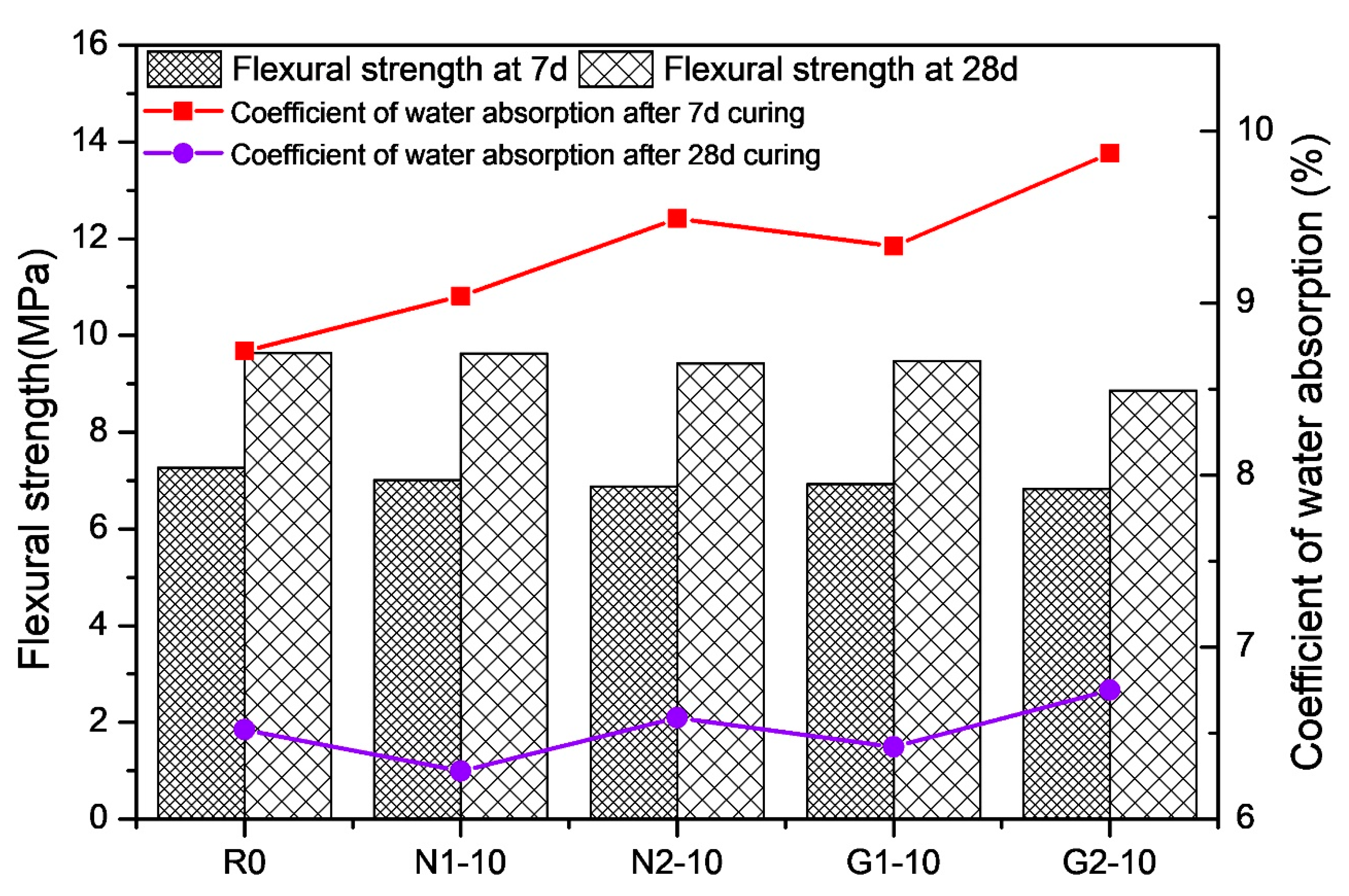
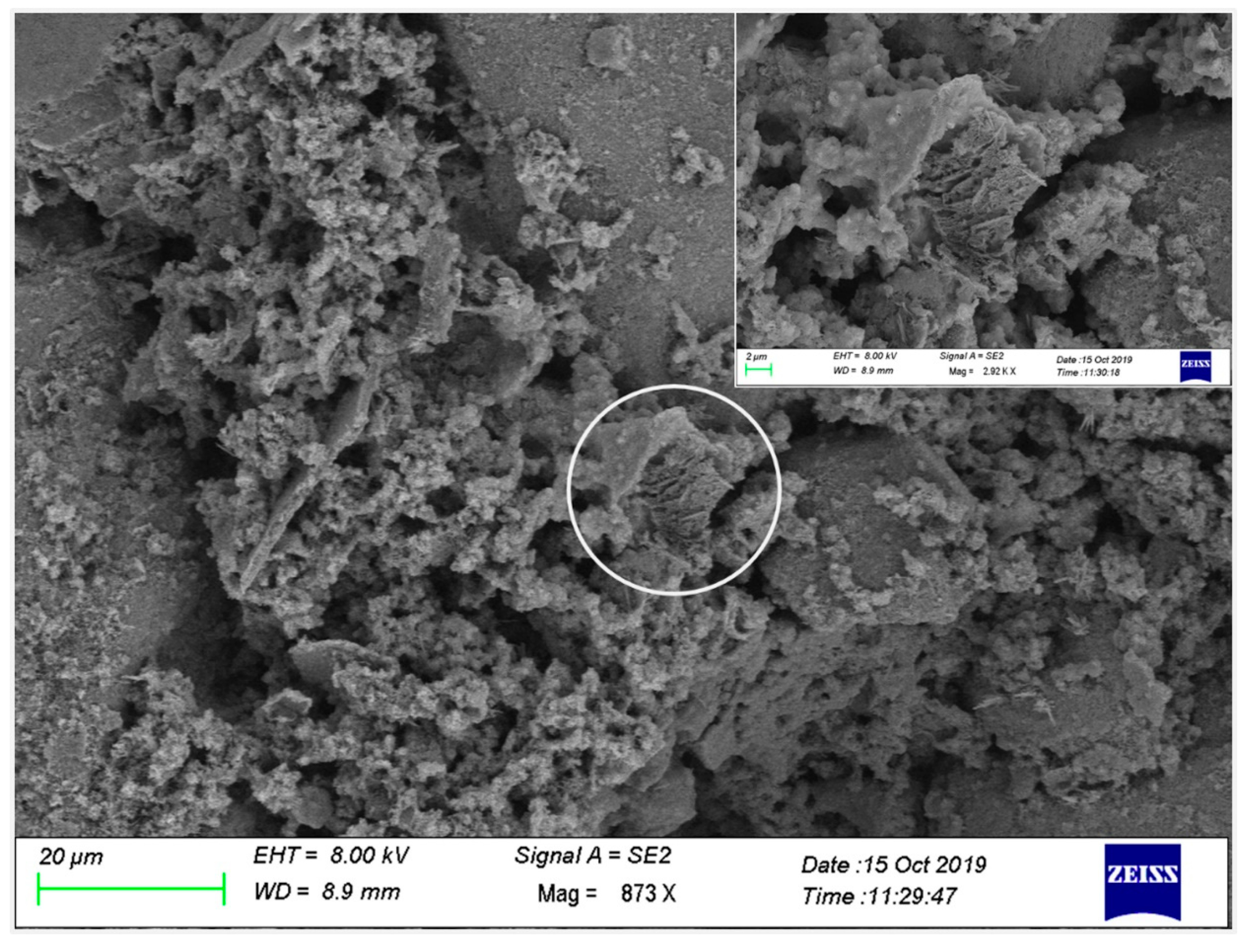
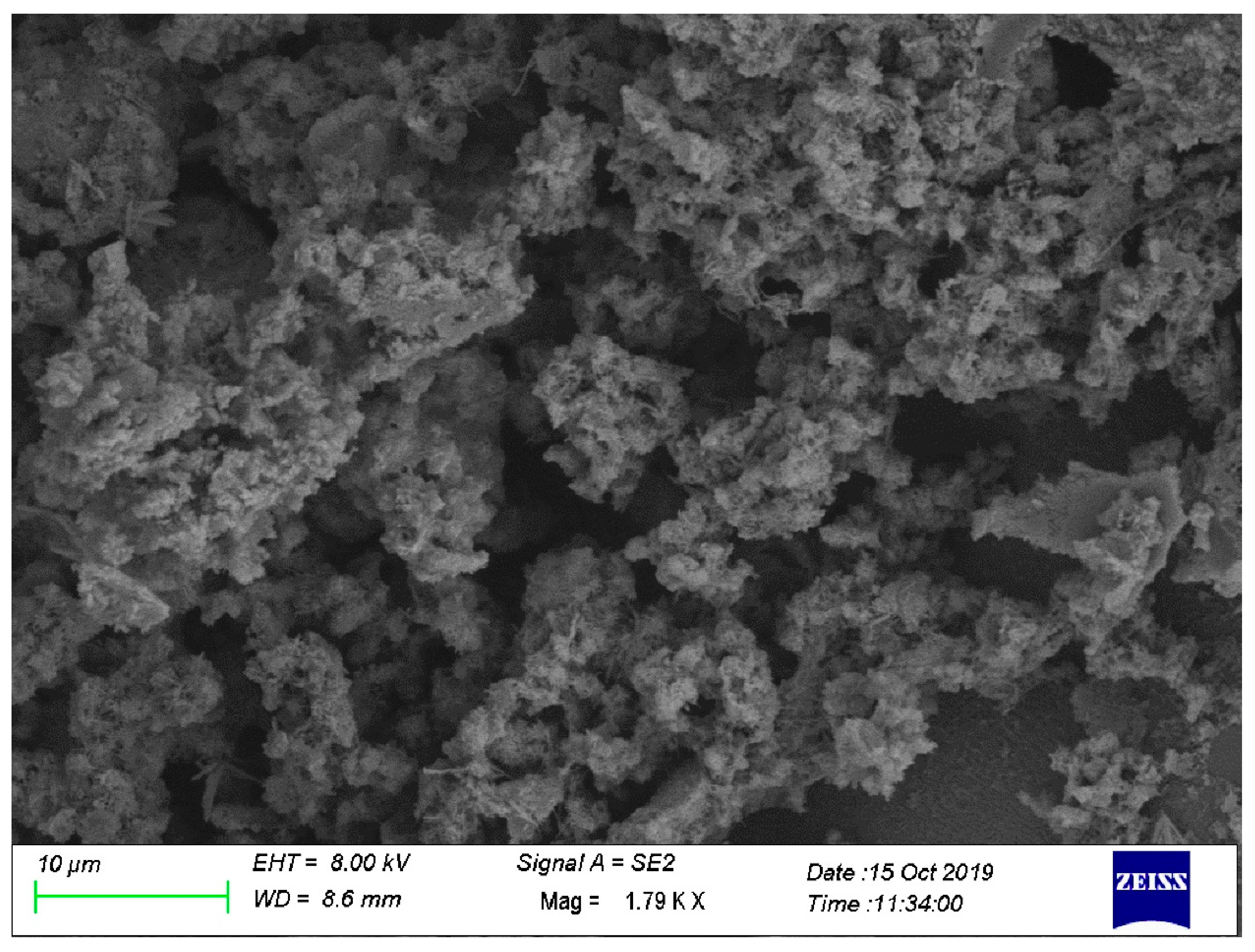
| Samples | SiO2 | K2O | Na2O | Fe2O3 | MgO | CaO | P2O5 | Others |
|---|---|---|---|---|---|---|---|---|
| N1 | 97.39 | 0.08 | 0.11 | 0.22 | 0.04 | 0.36 | 0.18 | 1.62 |
| N2 | 91.09 | 4.12 | 0.35 | 0.38 | 0.55 | 0.67 | 0.21 | 2.63 |
| G1 | 95.27 | 0.11 | 0.19 | 0.14 | 0.21 | 0.33 | 0.37 | 3.38 |
| G2 | 88.83 | 5.53 | 0.57 | 0.42 | 0.49 | 0.47 | 0.52 | 3.17 |
| Mix | Percentage of RHA * | Origin of RHA | Acid Pretreated | Cement Content | C/S Ratio | W/B Ratio | Water Reducing Rate |
|---|---|---|---|---|---|---|---|
| R0 | 0 | - | - | 1 | 1/3 | 0.55 | 1% |
| N1-5 | 5% | Inner Mongolia | Yes | 0.95 | 1/3 | 0.55 | 1% |
| N1-10 | 10% | Inner Mongolia | Yes | 0.9 | 1/3 | 0.55 | 1% |
| N1-15 | 15% | Inner Mongolia | Yes | 0.85 | 1/3 | 0.55 | 1% |
| N1-20 | 20% | Inner Mongolia | Yes | 0.8 | 1/3 | 0.55 | 1% |
| N2-10 | 10% | Inner Mongolia | No | 0.9 | 1/3 | 0.55 | 1% |
| G1-10 | 10% | Guangdong | Yes | 0.9 | 1/3 | 0.55 | 1% |
| G2-10 | 10% | Guangdong | No | 0.9 | 1/3 | 0.55 | 1% |
© 2020 by the authors. Licensee MDPI, Basel, Switzerland. This article is an open access article distributed under the terms and conditions of the Creative Commons Attribution (CC BY) license (http://creativecommons.org/licenses/by/4.0/).
Share and Cite
Liu, J.; Xie, C.; Fu, C.; Wei, X.; Wu, D. Hydrochloric Acid Pretreatment of Different Types of Rice Husk Ash Influence on the Properties of Cement Paste. Materials 2020, 13, 1524. https://doi.org/10.3390/ma13071524
Liu J, Xie C, Fu C, Wei X, Wu D. Hydrochloric Acid Pretreatment of Different Types of Rice Husk Ash Influence on the Properties of Cement Paste. Materials. 2020; 13(7):1524. https://doi.org/10.3390/ma13071524
Chicago/Turabian StyleLiu, Jing, Chunyan Xie, Chao Fu, Xiuli Wei, and Dake Wu. 2020. "Hydrochloric Acid Pretreatment of Different Types of Rice Husk Ash Influence on the Properties of Cement Paste" Materials 13, no. 7: 1524. https://doi.org/10.3390/ma13071524
APA StyleLiu, J., Xie, C., Fu, C., Wei, X., & Wu, D. (2020). Hydrochloric Acid Pretreatment of Different Types of Rice Husk Ash Influence on the Properties of Cement Paste. Materials, 13(7), 1524. https://doi.org/10.3390/ma13071524




